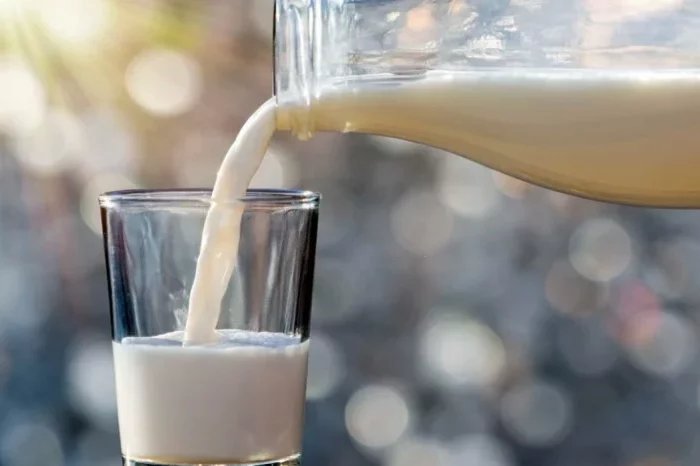Type 2 diabetes requires careful attention to diet, and choosing the right snacks is an essential part of maintaining stable blood sugar levels. Snacks can help manage hunger between meals, prevent overeating during main meals, and provide a steady supply of energy without causing spikes in blood glucose. The best snacks for type 2 diabetes are typically low in added sugars, high in fiber, and contain a good balance of macronutrients. In this article, we will explore various snack options and their suitability for individuals with type 2 diabetes.
Nuts: A Nutritious and Filling Choice
Healthy Fats and Protein: Nuts such as almonds, walnuts, and pistachios are rich in healthy monounsaturated and polyunsaturated fats. These fats are beneficial for heart health as they can help lower bad cholesterol levels. For example, a handful of almonds contains about 14 grams of fat, mainly in the form of oleic acid, which is a heart-healthy monounsaturated fat. Nuts are also a good source of protein. Almonds provide around 6 grams of protein per ounce. Protein helps in maintaining muscle mass and can slow down the digestion of carbohydrates, leading to a more gradual rise in blood sugar levels.
Fiber Content: They have a decent amount of fiber. Walnuts, for instance, contain about 2 grams of fiber per ounce. Fiber aids in digestion and gives a feeling of fullness, reducing the urge to snack on less healthy options. It also helps in regulating blood sugar by slowing down the absorption of glucose. The combination of healthy fats, protein, and fiber in nuts makes them a great snack option for those with type 2 diabetes. However, it’s important to be mindful of portion sizes as nuts are calorie-dense. A recommended serving is usually about a small handful, which is around 1 ounce.
Greek Yogurt: Creamy and Nutritious
High Protein: Greek yogurt is known for its high protein content. A typical 6-ounce serving can contain around 15 – 20 grams of protein. This protein is essential for maintaining muscle mass and can also help in keeping you full for longer. When protein is digested, it causes a slow and steady release of amino acids into the bloodstream, which has a minimal impact on blood sugar levels. For example, compared to regular yogurt, Greek yogurt has a thicker consistency and a higher concentration of protein due to the removal of whey during the straining process.
Low Sugar Options: Opting for plain, unsweetened Greek yogurt is best for type 2 diabetes. Some flavored yogurts can have a significant amount of added sugars, which can cause a spike in blood glucose. Plain Greek yogurt contains only the natural sugars from milk, which is lactose. It can be paired with fresh berries or a small amount of nuts to add flavor and additional nutrients. The probiotics in Greek yogurt are also beneficial for gut health, and a healthy gut microbiome may play a role in improving insulin sensitivity.
Calcium and Other Nutrients: Greek yogurt is a good source of calcium, which is important for strong bones and teeth. It also contains other vitamins such as vitamin B12 and riboflavin. Vitamin B12 is crucial for nerve function and the production of red blood cells. Consuming Greek yogurt regularly can help meet the daily requirements of these essential nutrients while keeping blood sugar levels in check.
Vegetable Sticks with Hummus: A Crunchy and Healthy Pair
Low-Carb Vegetables: Vegetables like carrots, celery, and cucumber are excellent choices for snacking. They are low in carbohydrates and high in fiber. For example, a medium-sized carrot contains only about 5 grams of carbohydrates, most of which is fiber. These vegetables have a high water content, which makes them filling without adding many calories. Celery is especially low in calories, with only about 6 calories per stalk. Their crunchy texture also provides a satisfying snacking experience.
Hummus and Its Benefits: Hummus is made from chickpeas, which are a good source of protein and fiber. A 2-tablespoon serving of hummus contains about 2 grams of protein and 1 gram of fiber. It also contains healthy fats from olive oil, which is often used in its preparation. The combination of protein, fiber, and healthy fats in hummus helps in regulating blood sugar levels. Additionally, chickpeas are rich in minerals like iron and magnesium. Iron is important for preventing anemia, and magnesium is involved in many metabolic processes, including insulin action. The vegetable sticks dipped in hummus make for a delicious and diabetes-friendly snack.
Hard-Boiled Eggs: A Protein-Packed Option
High-Quality Protein: Hard-boiled eggs are a convenient and nutritious snack. An average large egg contains about 6 – 7 grams of high-quality protein. The protein in eggs is complete, meaning it contains all the essential amino acids. These amino acids are necessary for various bodily functions, including the repair and growth of tissues. When consumed as a snack, the protein in eggs can help maintain muscle mass and keep you feeling full between meals. For example, having a couple of hard-boiled eggs in the afternoon can prevent excessive hunger and overeating during dinner.
Low in Carbohydrates: Eggs are extremely low in carbohydrates, with less than 1 gram per egg. This makes them an ideal snack for type 2 diabetes as they have a minimal impact on blood sugar levels. They can be paired with a small piece of whole grain toast or some sliced tomatoes for added flavor and nutrients. However, it’s important to note that the yolk contains cholesterol, so for those with concerns about cholesterol levels, it may be advisable to limit the number of yolks consumed. But recent research has shown that for most people, dietary cholesterol from eggs has a relatively small impact on blood cholesterol levels.
Berries: Nature’s Sweet Treat
Low Glycemic Index: Berries such as strawberries, blueberries, and raspberries have a low glycemic index. This means they cause a slow and steady rise in blood sugar levels. For example, a cup of strawberries contains about 7 grams of carbohydrates, mainly in the form of fiber and natural sugars. The fiber in berries helps in slowing down the digestion and absorption of sugars, preventing rapid spikes in blood glucose. Berries are also rich in antioxidants, which can help reduce oxidative stress in the body. Oxidative stress is often increased in individuals with type 2 diabetes and can contribute to various complications.
Rich in Nutrients: They are a good source of vitamins and minerals. Blueberries, for instance, are high in vitamin C and vitamin K. Vitamin C is an antioxidant that boosts the immune system, and vitamin K is important for bone health. Raspberries contain a good amount of manganese, which is involved in carbohydrate metabolism. Berries can be eaten on their own as a snack or added to Greek yogurt or oatmeal for added flavor and nutrition. They are a delicious way to satisfy a sweet tooth while still maintaining good blood sugar control
Air-Popped Popcorn: A Light and Low-Calorie Snack
High in Fiber: Air-popped popcorn is a whole grain snack that is high in fiber. A 3-cup serving of air-popped popcorn contains about 3 – 4 grams of fiber. The fiber helps in digestion and can make you feel full. It also slows down the absorption of carbohydrates, which is beneficial for blood sugar management. Popcorn is a good alternative to other high-calorie, low-nutrient snacks like potato chips.
Low in Calories: It is relatively low in calories compared to many other snack options. A 3-cup serving of air-popped popcorn has only about 90 – 100 calories. This makes it a great snack for those who are watching their weight. However, it’s important to avoid adding excessive amounts of butter or salt. Instead, a light sprinkle of olive oil and a little bit of sea salt can enhance the flavor without adding too many calories or sodium. Popcorn can be a satisfying snack to munch on while watching a movie or during a break at work.
Conclusion
There are many great snack options for individuals with type 2 diabetes. Nuts provide healthy fats, protein, and fiber; Greek yogurt offers high protein and low sugar choices; vegetable sticks with hummus combine low-carb veggies with a protein and fiber-rich dip; hard-boiled eggs are a protein-packed, low-carb option; berries are low glycemic and rich in nutrients; and air-popped popcorn is a light, high-fiber, and low-calorie snack. Incorporating a variety of these snacks into the diet can help manage hunger, maintain stable blood sugar levels, and provide essential nutrients. It’s important to remember to pay attention to portion sizes and to choose snacks with minimal added sugars and refined carbohydrates. Consulting with a healthcare provider or a registered dietitian can also be helpful in creating a personalized snack plan that aligns with an individual’s specific dietary needs and diabetes management goals.



























